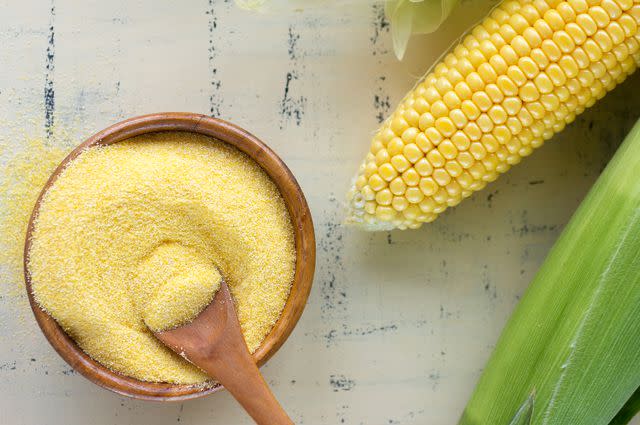Is Corn a Vegetable, Fruit, or Grain?
This favorite summer food has several identities, but only one is official.
Every summer, fresh corn appears in the market that's juicy, sweet, and ready to be tossed into salads, roasted, boiled and served with butter dripping from its kernels, or dropped into a creamy chowder. We prepare and consume corn like a vegetable, but is that the best way to categorize this icon of summer eating? It's sweet enough to be a fruit, like other "vegetables" that are technically fruits (hello tomatoes, avocados, and squash)—and there is corn ice cream, after all. Or, is corn neither a vegetable or fruit and actually a grain?
Why Corn Is a Grain
We'll get straight to the point: Corn is a grain. The grain answer lies in those kernels, and in the corn plant itself.
Corn is really an oversized grass, and the seeds of all grasses that are cultivated as cereal crops are grains. (A brief aside: pseudo-grains like amaranth and quinoa are the seeds of herbaceous plants, not grasses.) Domesticated for millennia, corn is a pre-Columbian grain bred from a grass originally native to southern North America—present-day southern Mexico, with Oaxaca thought to be the nexus of corn-growing.
Zea mays subsp. mays (corn's botanical name) is a member of the Poaceae (grass) family. Its closest wild relatives are grasses called teosintes, sometimes referred to as mother-of-corn. While they are also subspecies of Zea mays, they are unrecognizable as corn's close cousins because thousands of years of selection have supersized the corn: it has many rows of soft, fat kernels that are otherwise naked under their protective wrapping of husks. Teosinte seeds, in a single row, are enclosed in an exceptionally tough wrapper. It is thought that ancient, intuitive breeding practices selected plants that had undergone a natural genetic mutation, losing their tough seed wrapper over time, with farmers choosing the best-looking and best-tasting plants and saving their seeds to sow again. Think of it as 6,000 to 9,000 years of genetic modification, slow-motion style. (It's ironic that corn today is the most genetically modified crop in the United States, bred to withstand pesticides as well as the herbicides that kill the weeds between its rows, leaving this domesticated grass unscathed.)
Related: Our Favorite Corn Recipes for When We're Pretending It's a Vegetable

Nutrition
A large ear of corn contains around 27 grams of carbohydrates and 3 grams of fiber, according to the USDA National Nutrient Database. Fresh corn is also high in Vitamin C, micronutrients, and contains some protein. Its glycemic index is moderate, which means it is not likely to cause sudden spikes in blood sugar when eaten in moderation.
Corn in Different Forms
Of course, corn comes in many (many) forms, from dried hominy, grits, polenta, and cornmeal, to crunchy snacks like popcorn, tortilla chips, and breakfast cereals like corn flakes. The more processed the corn, the less healthy it becomes. And then there are the sneakier derivatives, the most notorious being high fructose corn syrup, as well as corn starch and corn oil, all present in countless processed foods. Be sure to read labels carefully before you buy.
Nixtamalization
Some food processing is actually a good thing: Processing dried corn in a special way called nixtamalization has beneficial and essential effects, notably the liberation of its otherwise unavailable niacin (Vitamin B3), an essential nutrient. The ancient American process of soaking dried corn in wood ash water (lye water) releases the niacin in the grain, making it available during consumption. In cultures where corn is a staple food but where it is not nixtamalized, pellagra, a serious and sometimes fatal disease of malnutrition, is not uncommon. Corn also has another deficiency, at least, if it is your main source of food: it is very low in tryptophan, a precursor of serotonin, which is an important neurotransmitter. Again, this is relevant only if it is your main source of nutrition.
Ready to Eat?
How does that ear of corn look to you now? Whether you think of it as a vegetable, grain, or even fruit, fresh corn is a treat. Toss some organic ears onto the grill, strip back the leafy husks after they have steamed the kernels inside, and dress all that sweetness with a butter, lime, and cayenne combo.

